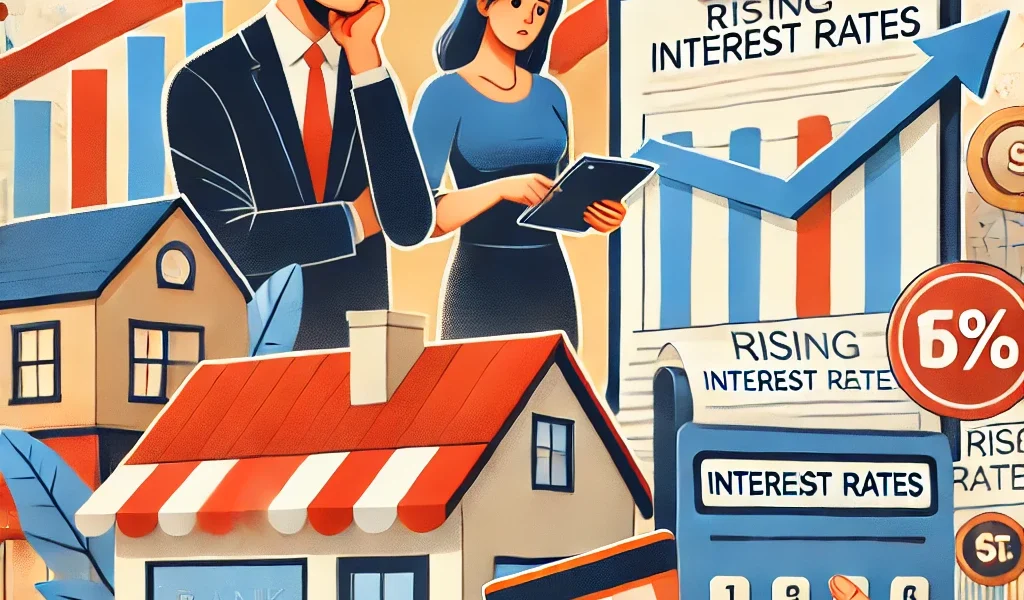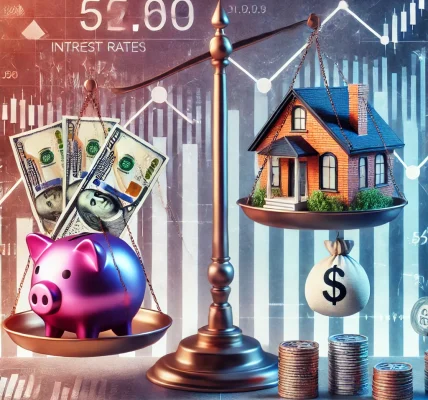Introduction
Interest rates play a crucial role in shaping economic activity, affecting both businesses and consumers. When central banks, such as the Federal Reserve or the European Central Bank, raise interest rates, it has a ripple effect throughout the economy. Small businesses face higher borrowing costs, while consumers experience increased expenses on loans and mortgages. This blog explores the impact of interest rate hikes on small businesses and consumers, shedding light on how they can navigate these financial challenges.
Understanding Interest Rate Hikes
What Are Interest Rate Hikes?
An interest rate hike refers to an increase in the benchmark lending rate set by a country’s central bank. This is typically done to control inflation, stabilize the currency, or cool down an overheated economy. When interest rates rise, borrowing becomes more expensive, which can slow down spending and investment.
Why Do Central Banks Raise Interest Rates?
Central banks raise interest rates for several reasons:
- Inflation Control: To curb rising prices and maintain economic stability.
- Economic Cooling: To slow down excessive borrowing and spending that could lead to financial bubbles.
- Currency Strengthening: Higher interest rates attract foreign investments, strengthening the national currency.
- Financial Market Stability: To ensure that financial markets remain sustainable and prevent excessive risk-taking.
Impact on Small Businesses
Increased Borrowing Costs
Small businesses often rely on loans to finance their operations, expand, and invest in new projects. When interest rates rise:
- Loan Repayments Increase: Businesses with existing variable-rate loans see higher monthly payments.
- New Loans Become Costlier: Higher rates make it more expensive to take out new loans.
- Investment Slows Down: Expanding operations, hiring employees, and purchasing equipment become financially challenging.
Reduced Consumer Spending
Higher interest rates lead to lower disposable income among consumers, which affects businesses in several ways:
- Lower Sales Revenue: Consumers cut back on non-essential spending, impacting businesses in retail, hospitality, and entertainment sectors.
- Decline in Credit-Based Purchases: Many customers rely on credit cards or financing for major purchases, which become more expensive.
- Longer Sales Cycles: Businesses selling big-ticket items, such as cars and real estate, experience slower sales as financing costs rise.
Cash Flow Challenges
Cash flow is critical for small businesses, and interest rate hikes create difficulties:
- Higher Operating Expenses: With rising costs of loans, leasing, and credit lines, businesses must allocate more funds to debt servicing.
- Delayed Payments from Customers: Consumers and other businesses facing financial strain may delay payments, affecting cash flow.
- Supplier Costs May Rise: If suppliers also face higher borrowing costs, they may pass these costs onto small businesses.
Workforce Implications
With rising financial strain, businesses may need to make tough workforce decisions:
- Hiring Freezes: Companies may delay hiring new employees due to financial uncertainty.
- Wage Growth Slowdown: Businesses might struggle to increase salaries, affecting employee morale.
- Potential Layoffs: In extreme cases, companies may need to reduce staff to cut costs.
Impact on Consumers
Higher Mortgage and Loan Costs
One of the most immediate effects of an interest rate hike on consumers is the increased cost of borrowing:
- Mortgage Payments Increase: Homeowners with adjustable-rate mortgages (ARMs) see their monthly payments rise.
- Auto Loans Become Expensive: Higher rates lead to increased monthly payments for car loans.
- Credit Card Debt Becomes Costlier: Interest on credit card balances rises, making debt repayment more challenging.
Lower Disposable Income
With higher borrowing costs, consumers have less disposable income:
- Reduced Spending Power: Higher loan payments mean less money for discretionary spending on travel, dining, and entertainment.
- Savings Are Encouraged: Higher interest rates on savings accounts encourage consumers to save rather than spend.
Impact on Investments and Retirement Accounts
Rising interest rates affect financial markets, influencing consumer investments:
- Stock Market Volatility: Higher rates can lead to declining stock prices, affecting investment portfolios.
- Bonds Become More Attractive: Consumers may shift from stocks to bonds as they offer better returns in a high-interest environment.
- Retirement Accounts May Fluctuate: 401(k) and other retirement accounts may see temporary declines as the stock market reacts to rate hikes.
How Small Businesses and Consumers Can Adapt
Strategies for Small Businesses
- Refinance Existing Debt: Businesses should consider refinancing loans at fixed interest rates before further rate hikes occur.
- Improve Cash Flow Management: Reducing unnecessary expenses and optimizing invoicing processes can help maintain financial stability.
- Diversify Revenue Streams: Expanding product or service offerings can mitigate the impact of reduced consumer spending.
- Negotiate with Suppliers: Seeking better payment terms or discounts can help offset increased costs.
Strategies for Consumers
- Pay Down High-Interest Debt: Reducing credit card balances and other high-interest loans can minimize financial strain.
- Consider Fixed-Rate Loans: Locking in fixed interest rates for mortgages or personal loans can protect against future rate increases.
- Adjust Spending Habits: Budgeting and prioritizing essential expenses can help manage increased financial burdens.
- Take Advantage of Higher Savings Rates: Consumers should explore high-yield savings accounts to benefit from increased interest rates.
Conclusion
Interest rate hikes have significant implications for both small businesses and consumers. Higher borrowing costs, reduced consumer spending, and economic uncertainty create challenges that require strategic financial planning. By understanding the impact of rising interest rates and adopting proactive measures, businesses and individuals can navigate these economic changes effectively. Staying informed, managing debt wisely, and optimizing financial strategies will help mitigate risks and maintain financial stability in a high-interest-rate environment.




